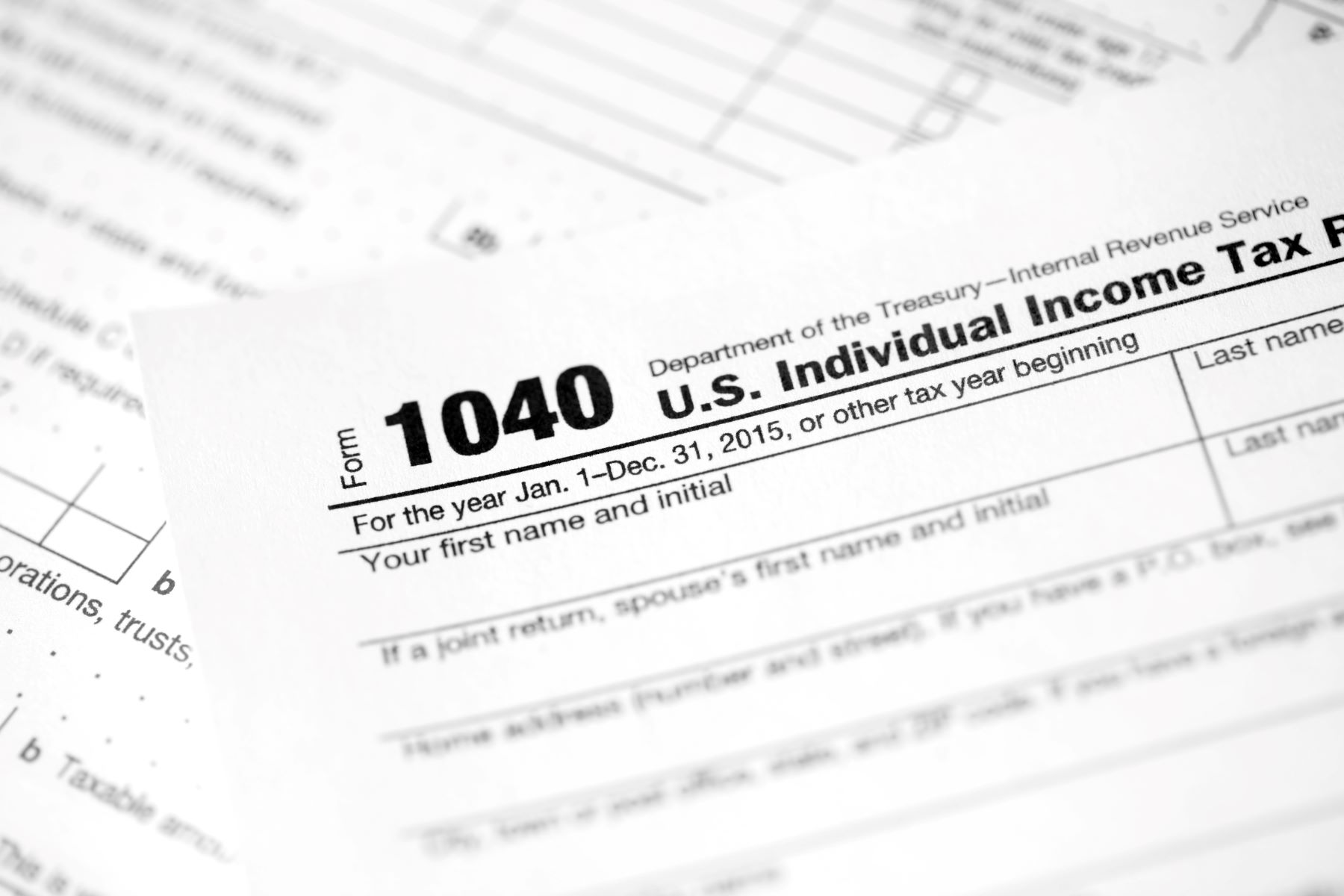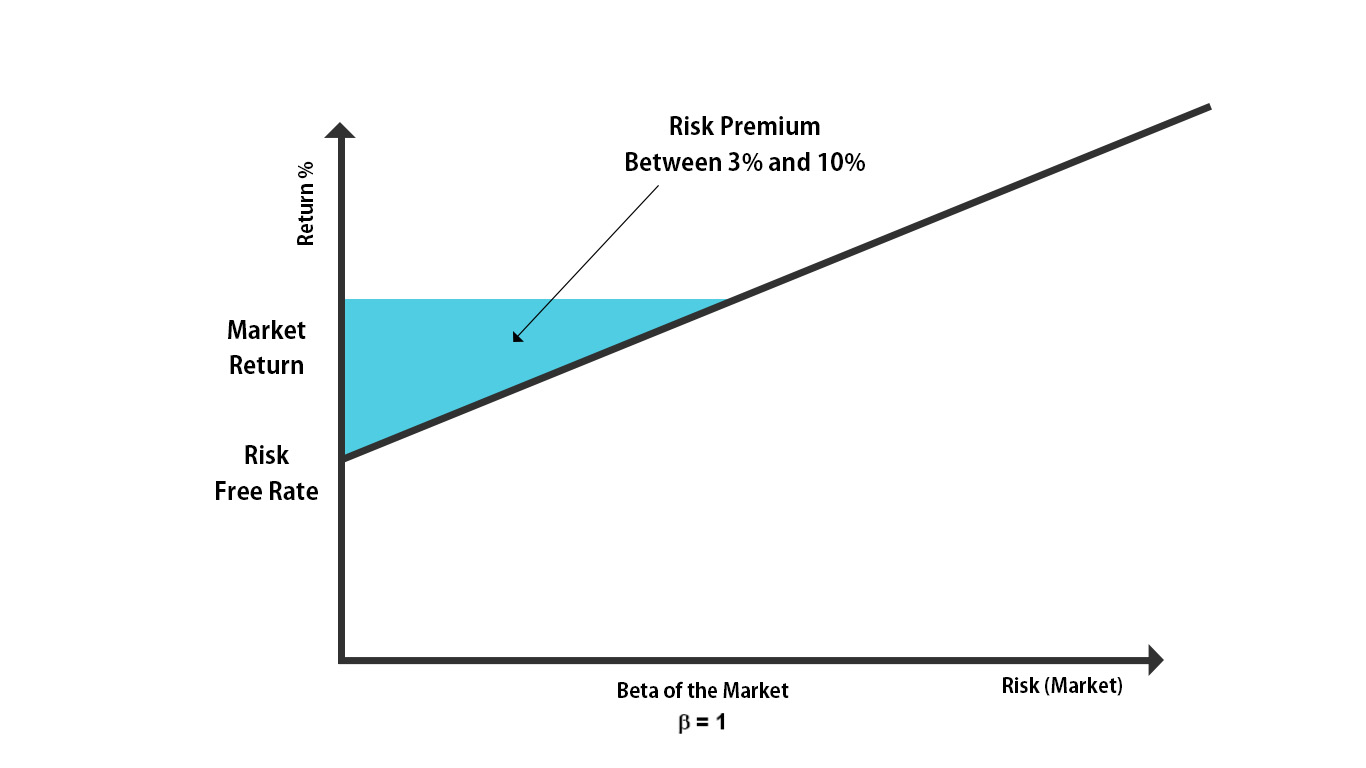

Finance
Where To Put Money After Maxing Out 401K
Modified: February 21, 2024
Looking for ways to invest your money after maxing out your 401K? Discover smart finance options to grow your wealth and secure your financial future.
(Many of the links in this article redirect to a specific reviewed product. Your purchase of these products through affiliate links helps to generate commission for LiveWell, at no extra cost. Learn more)
Table of Contents
- Introduction
- Understanding 401K Contribution Limits
- Maxing Out Your 401K: What It Means
- Where to Put Money after Maxing Out 401K
- Option 1: Contributing to an Individual Retirement Account (IRA)
- Option 2: Investing in a Health Savings Account (HSA)
- Option 3: Taxable Brokerage Account
- Option 4: Real Estate Investments
- Option 5: Starting a Small Business
- Conclusion
Introduction
Maxing out your 401K contributions is a smart financial move that helps secure a comfortable retirement. However, what should you do with your money once you’ve reached the contribution limit? It’s essential to have a plan in place to make the most of your additional savings and optimize your financial future.
Understanding the ins and outs of 401K contribution limits is crucial before delving into where to put your money. The Internal Revenue Service (IRS) sets annual limits on how much you can contribute to your 401K account. These limits are determined by various factors, such as your age, income, and the type of 401K plan you have.
Maxing out your 401K means reaching the maximum allowable annual contribution limit. In 2021, the contribution limit is $19,500 for those under the age of 50. If you’re 50 or older, you can contribute an additional $6,500 as a catch-up contribution. By reaching these limits, you ensure you’re taking full advantage of the tax benefits and employer match, if applicable.
Once you’ve maxed out your 401K contributions, it’s time to consider other investment options to further grow your wealth. Here are five potential avenues to explore:
Understanding 401K Contribution Limits
Before diving into where to put your money after maxing out your 401K, it’s essential to have a clear understanding of 401K contribution limits. These limits are established by the IRS and regulate how much you can contribute to your 401K account each year.
The specific contribution limits for 401K accounts can vary from year to year. For the year 2021, the maximum annual contribution limit for those under the age of 50 is $19,500. This means that you can contribute up to $19,500 from your income before taxes to your 401K account. If you are 50 years old or older, you are allowed to make catch-up contributions on top of the regular limit. In 2021, the catch-up contribution limit is an additional $6,500.
It’s worth noting that these contribution limits are not solely based on age. Higher-income earners may face additional restrictions on their 401K contributions due to policies designed to prevent excessive tax advantages for higher earners.
Employer match is another significant aspect of 401K contributions. Many employers offer a matching contribution up to a certain percentage of your salary. It’s important to take advantage of this benefit because it essentially adds free money to your retirement savings. However, employer matches typically have their limits. It’s crucial to understand your employer’s matching policy and contribution limits to maximize your benefits.
Finally, it’s important to note that contribution limits apply to all 401K accounts you may have. If you have multiple 401K accounts from previous employers, you must consider the combined contributions made to all accounts.
Understanding these contribution limits and the rules surrounding them is critical for proper retirement planning. By staying within these limits and taking advantage of any employer match, you are making the most of the tax benefits and potential growth opportunities that a 401K offers.
Maxing Out Your 401K: What It Means
Maxing out your 401K means that you have reached the maximum allowable annual contribution limit set by the IRS. This implies that you have contributed the maximum amount of money permitted to your 401K account for the year, taking full advantage of the tax benefits and potential employer match.
By maxing out your 401K, you are ensuring that you’re making the most of your retirement savings opportunities. It’s a proactive step towards securing a financially stable future and enjoying a comfortable retirement. Here are a few key points to understand about maxing out your 401K:
- Maximized Tax Benefits: By contributing the maximum amount allowed to your 401K, you are reducing your taxable income for the year. The money you contribute is deducted from your gross earnings, which lowers your overall tax liability. This means that you pay less in taxes and potentially move into a lower tax bracket.
- Potential Employer Match: Many employers offer a matching contribution to encourage employees to save for retirement. The employer match can vary, but commonly, employers match a percentage of the employee’s contributions up to a certain limit. When you max out your contributions, you are ensuring that you receive the maximum matching funds from your employer, effectively doubling your savings. This is essentially free money that can significantly boost your retirement savings.
- Long-Term Growth Potential: By maxing out your 401K contributions, you are maximizing your investment in retirement funds. Over time, the money you contribute, along with potential investment gains, has the opportunity to grow significantly. Consistently maxing out your 401K can accelerate the growth of your retirement portfolio, potentially providing you with a more substantial nest egg when you retire.
- Financial Discipline: Maxing out your 401K requires discipline and careful financial planning. It encourages you to evaluate your budget, prioritize your retirement savings, and potentially make adjustments to your spending habits. By consistently contributing the maximum amount, you are adopting a responsible approach to your financial future.
While maxing out your 401K is a commendable accomplishment, it’s important to remember that it’s just one piece of the puzzle in building a robust retirement plan. Exploring additional investment options beyond your 401K can help diversify your portfolio and further enhance your long-term financial security.
Where to Put Money after Maxing Out 401K
Once you have maxed out your 401K contributions, you may wonder what to do with any additional savings. Here are five potential options to consider:
- Contributing to an Individual Retirement Account (IRA): An IRA is another tax-advantaged retirement account that allows you to save for retirement. Depending on your income and eligibility, you can contribute up to $6,000 (or $7,000 if you are 50 years old or older) to an IRA in 2021. Both traditional and Roth IRAs offer different tax benefits, so it’s essential to understand the differences and choose the one that aligns with your financial goals.
- Investing in a Health Savings Account (HSA): If you have a high-deductible health insurance plan, you may be eligible for a Health Savings Account (HSA). An HSA provides triple tax advantages: contributions are tax-deductible, earnings grow tax-free, and withdrawals for qualified medical expenses are tax-free. Consider maximizing your HSA contributions to cover future healthcare costs in retirement.
- Taxable Brokerage Account: If you have already maxed out your tax-advantaged retirement accounts, investing in a taxable brokerage account is an option worth exploring. A brokerage account allows you to invest in a wide range of securities, including stocks, bonds, and mutual funds. While investment gains in a taxable account are subject to capital gains tax, having a brokerage account provides flexibility and liquidity.
- Real Estate Investments: Real estate can be a valuable addition to your investment portfolio. Consider investing in rental properties, real estate investment trusts (REITs), or crowdfunding platforms that allow you to invest in real estate projects. Real estate investments can offer potential cash flow, tax benefits, and diversification.
- Starting a Small Business: If you have a passion or entrepreneurial spirit, starting a small business can be an exciting venture. Allocating some of your savings towards launching a business can potentially yield significant returns and provide you with financial independence. However, starting a business comes with risks and requires careful planning and research.
It’s essential to assess your risk tolerance, investment goals, and financial situation before deciding where to allocate your additional savings. Consulting with a financial advisor can help you make informed decisions based on your individual circumstances.
Remember, diversification is key. Consider a combination of these options to spread your investments and mitigate risks. Finding the right balance between risk and reward is crucial in building a well-rounded and resilient financial portfolio.
Option 1: Contributing to an Individual Retirement Account (IRA)
Contributing to an Individual Retirement Account (IRA) is a popular option for individuals who have maxed out their 401K contributions. An IRA is a tax-advantaged retirement account that provides additional savings opportunities and potential tax benefits.
There are two main types of IRAs: traditional and Roth. The primary difference between the two lies in how they are taxed.
With a traditional IRA, contributions are typically tax-deductible, meaning that you can deduct the amount you contribute from your taxable income in the year of contribution. The money grows tax-deferred, meaning you won’t pay taxes on any earnings until you withdraw the funds in retirement. When you withdraw from a traditional IRA in retirement, the distributions are taxed as ordinary income.
On the other hand, a Roth IRA offers tax-free withdrawals in retirement. Contributions to a Roth IRA are made with after-tax dollars, meaning you do not get a tax deduction for your contributions. However, the earnings grow tax-free, and withdrawals in retirement are tax-free as well, as long as certain conditions are met.
In 2021, the annual contribution limit for IRAs is $6,000 for those under the age of 50, with an additional $1,000 catch-up contribution allowed for individuals 50 and older.
Choosing between a traditional and Roth IRA depends on your individual circumstances and tax objectives. A traditional IRA may be more suitable if you can benefit from the upfront tax deduction and expect to be in a lower tax bracket in retirement. On the other hand, a Roth IRA may be preferable if you anticipate being in a higher tax bracket later in life or if you prefer the flexibility of tax-free withdrawals.
It’s important to note that there are income limitations for contributing to a Roth IRA. These limits vary depending on your filing status and can change from year to year. If your income exceeds the limits for a Roth IRA, you may still be able to contribute to a traditional IRA and then convert it to a Roth IRA through a strategy called a Backdoor Roth IRA.
Contributing to an IRA, whether traditional or Roth, allows you to continue growing your retirement savings in a tax-advantaged manner. It’s essential to consult with a financial advisor or tax professional to determine which type of IRA is most suitable for your financial goals and circumstances.
Option 2: Investing in a Health Savings Account (HSA)
Investing in a Health Savings Account (HSA) is another smart option after maxing out your 401K contributions. An HSA is a tax-advantaged savings account that allows individuals with a high-deductible health insurance plan to set aside funds for qualified medical expenses.
HSA contributions offer triple tax advantages:
- Tax-Deductible Contributions: Contributions made to an HSA are tax-deductible, meaning you can deduct them from your taxable income for the year. This reduces your overall tax liability and can potentially put you in a lower tax bracket.
- Tax-Free Earnings: Any investment gains within your HSA grow tax-free. You have the option to invest the funds in your HSA in various investment vehicles, such as mutual funds or stocks, to potentially generate additional returns over time.
- Tax-Free Withdrawals: Withdrawals from an HSA for qualified medical expenses are tax-free. This includes expenses like doctor visits, prescription medications, hospital stays, and more. It’s important to note that if you withdraw funds for non-qualified expenses before reaching age 65, you will be subject to a penalty and taxed on the amount withdrawn.
By investing in an HSA, you can save for future medical expenses in a tax-efficient way. Furthermore, HSA funds can be carried forward from year to year, allowing you to build a substantial healthcare nest egg over time.
Maximizing your HSA contributions not only helps cover your medical expenses during retirement but also provides financial security and flexibility. You can use the funds to pay for healthcare costs not covered by insurance, such as dental work, vision care, and long-term care expenses.
HSAs have certain eligibility requirements, primarily related to the type of health insurance plan you have. To qualify for an HSA, you must be enrolled in a high-deductible health insurance plan, which typically has a higher deductible and lower premiums than traditional health insurance plans. You also cannot be covered by any other non-HSA compatible health insurance.
It’s worth noting that unlike a flexible spending account (FSA), which is another type of health savings account, HSA funds roll over from year to year. This means that any unused funds in your HSA at the end of the year are not forfeited but continue to grow and accumulate for future use.
Consult with a financial advisor or healthcare provider to determine if an HSA is the right choice for you based on your individual circumstances and future healthcare needs. Investing in an HSA can provide tangible benefits and help you stay on track for a secure financial future.
Option 3: Taxable Brokerage Account
If you have maxed out your 401K contributions and are looking for additional investment opportunities, opening a taxable brokerage account is a viable option. A taxable brokerage account allows you to invest in various securities such as stocks, bonds, exchange-traded funds (ETFs), and mutual funds.
Unlike retirement accounts like 401Ks and IRAs, funds invested in a taxable brokerage account are not subject to specific contribution limits or withdrawal restrictions. You have the freedom to deposit or withdraw money as needed, giving you greater flexibility and access to your funds.
However, it’s important to note that investment gains in a taxable brokerage account are subject to capital gains tax. The specific tax rate depends on the length of time you hold the investment and your taxable income level. Generally, investments held for more than one year qualify for long-term capital gains tax rates, which are often lower than ordinary income tax rates.
Investing in a taxable brokerage account offers several advantages:
- Liquidity: Funds in a taxable brokerage account are easily accessible, allowing you to use them for various purposes, such as emergencies or large expenses. This provides a level of financial flexibility that retirement accounts don’t offer.
- Diversification: A taxable brokerage account allows you to diversify your investment portfolio beyond retirement accounts. By investing in different asset classes and industries, you can potentially mitigate risk and capitalize on different market opportunities.
- Long-Term Growth: With a taxable brokerage account, you have the potential for long-term growth through stock appreciation and dividend payments. You can reinvest dividends or choose to receive them as cash.
- Tax-Loss Harvesting: A taxable brokerage account provides an opportunity for tax-loss harvesting. This strategy involves selling investments that have declined in value to offset capital gains and potentially reduce your tax liability.
When opening a taxable brokerage account, consider working with a reputable brokerage firm that offers a wide range of investment options and provides tools and resources to help you make informed investment decisions. It’s also important to carefully consider your risk tolerance, investment goals, and time horizon before making any investment decisions.
While a taxable brokerage account offers flexibility and potential growth, it’s important to be mindful of taxes and properly manage your investments for tax efficiency. Consult with a financial advisor or tax professional to develop a personalized investment strategy that aligns with your long-term financial goals.
Option 4: Real Estate Investments
Investing in real estate can be a lucrative option for individuals who have maxed out their 401K contributions and are looking for alternative avenues to grow their wealth. Real estate offers the potential for long-term appreciation, steady cash flow, and diversification within your investment portfolio.
There are various ways to invest in real estate:
- Rental Properties: Purchasing residential or commercial properties and renting them out can provide a stable income stream. Rental properties offer the potential for both monthly rental income and appreciation in property value over time.
- Real Estate Investment Trusts (REITs): REITs allow investors to pool their money to invest in real estate assets, such as apartment buildings, office spaces, or shopping centers. REITs are publicly traded companies that distribute at least 90% of their taxable income to shareholders in the form of dividends.
- Crowdfunding Platforms: Crowdfunding platforms have made real estate investing more accessible to individual investors. These platforms allow you to invest smaller amounts of money in specific real estate projects or properties alongside other investors.
- Real Estate Development: Investing in real estate development projects involves financing the construction or renovation of properties. This option can provide higher returns but typically comes with higher risks and longer investment horizons.
Real estate investments offer several benefits:
- Cash Flow: By investing in rental properties, you can generate a regular stream of rental income, which can contribute to your overall financial stability. Positive cash flow from real estate investments can help cover your expenses and even provide additional income.
- Appreciation: Real estate has the potential to appreciate in value over time. Historically, real estate has shown steady long-term appreciation, allowing investors to build equity and potentially profit from property appreciation when it’s time to sell.
- Tax Advantages: Real estate investments come with various tax benefits, such as the ability to deduct mortgage interest, property taxes, depreciation, and certain expenses. These tax advantages can help reduce your overall tax liability and potentially increase your investment returns.
- Diversification: Investing in real estate provides diversification within your investment portfolio, reducing the risk associated with having all your investments in a single asset class. Real estate’s performance is often not directly correlated with the stock market, offering a potential hedge against market volatility.
However, it’s important to consider the potential risks and challenges of investing in real estate. Real estate investments require careful research, due diligence, and ongoing management. Property values can fluctuate, and rental income may be affected by factors like market conditions, vacancies, and maintenance expenses. It’s crucial to thoroughly evaluate each investment opportunity and consider working with professionals, such as real estate agents or property managers, to ensure proper management and maximize returns.
Before venturing into real estate, consult with a financial advisor or real estate professional to assess your financial goals, risk tolerance, and investment horizon. They can guide you in selecting the most suitable real estate investment strategy that aligns with your objectives.
Option 5: Starting a Small Business
For those looking to take a more active role in their financial future, starting a small business can be an enticing option after maxing out their 401K contributions. Owning a small business can provide independence, potential for significant income, and the opportunity to build wealth over time.
Here are some key considerations and advantages of starting a small business:
- Passion and Independence: Starting a business based on your passion allows you to work on something you truly enjoy and believe in. Being your own boss provides the freedom to make decisions and shape the direction of your business.
- Unlimited Earning Potential: Unlike traditional employment, a successful small business can provide unlimited earning potential. Your hard work and dedication can directly impact the profitability of your venture, allowing you to increase your income over time.
- Asset Creation: A successful small business can create a valuable asset that can appreciate over time. If you plan to eventually sell the business or pass it on to future generations, it can become a significant source of wealth.
- Tax Benefits: Running a small business opens up various tax benefits and deductions that can reduce your overall tax liability. You may be able to deduct business-related expenses, such as operating costs, marketing expenses, and even a portion of your home office expenses.
- Job Creation: By starting a small business, you also have the opportunity to create job opportunities for others. Contributing to job creation and economic growth in your community can be fulfilling and have a positive impact beyond your own financial goals.
However, starting a small business requires careful planning, research, and a significant investment of time, effort, and capital. It’s crucial to thoroughly evaluate your business idea, market demand, competition, and financial feasibility. Financial management and strategic planning are key to ensuring the success and long-term growth of your business.
A strong business plan, understanding your target market, and having a solid marketing strategy in place are essential for building a sustainable and profitable enterprise. It’s also important to seek guidance from professionals, such as business consultants or mentors, who can provide guidance and support throughout your entrepreneurial journey.
Starting a small business can be rewarding, but it also comes with risks and challenges. It’s essential to carefully assess your risk tolerance, financial resources, and personal commitment before embarking on this path. While the potential for financial success is there, it requires dedication, perseverance, and a willingness to adapt to changing market conditions.
Consulting with a financial advisor or business expert can provide valuable insights into the financial aspects of starting a business and help you make informed decisions based on your specific goals and circumstances.
Conclusion
Maxing out your 401K contributions is a significant step towards securing your financial future. However, once you’ve reached the contribution limit, it’s important to consider alternative investment options to continue growing your wealth and diversify your portfolio.
Options such as contributing to an Individual Retirement Account (IRA) or investing in a Health Savings Account (HSA) allow you to take advantage of additional tax-advantaged savings opportunities. These accounts provide tax benefits and the potential for long-term growth, helping you build a more robust retirement fund.
A taxable brokerage account opens up opportunities for investing in a wide range of securities, providing liquidity and flexibility. This option allows you to tailor your investment strategy to your specific goals and risk tolerance, providing an additional source of potential growth outside of retirement accounts.
Real estate investments offer the potential for long-term appreciation, steady cash flow, and diversification within your investment portfolio. Rental properties, REITs, crowdfunding platforms, and real estate development provide various avenues to participate in the real estate market and potentially generate substantial returns.
For individuals seeking more active involvement in their financial future, starting a small business can provide independence, unlimited earning potential, and asset creation. Running a business allows you to build wealth, leverage your passion, and potentially create job opportunities for others.
In conclusion, after maxing out your 401K contributions, it’s crucial to evaluate your financial goals, risk tolerance, and investment horizon. By exploring these alternative investment options, you can continue to grow your wealth, diversify your portfolio, and secure a financially stable future. However, it’s important to consult with a financial advisor or relevant experts to ensure your investment decisions align with your specific financial circumstances and long-term objectives.














